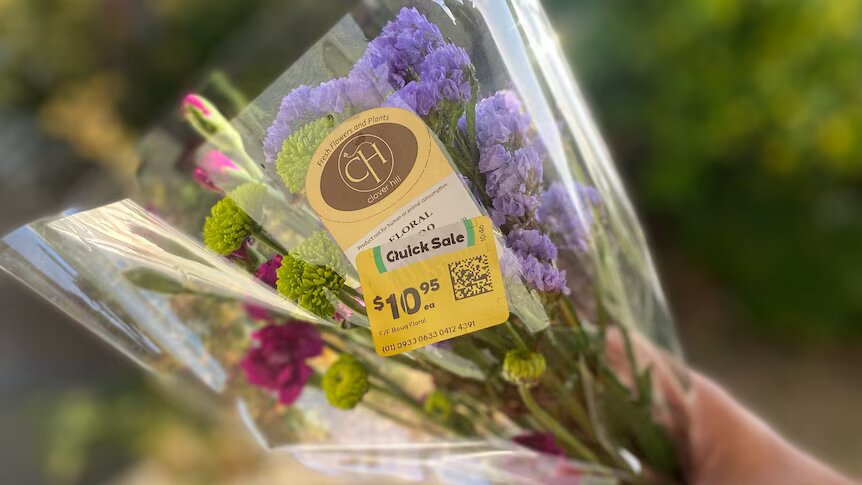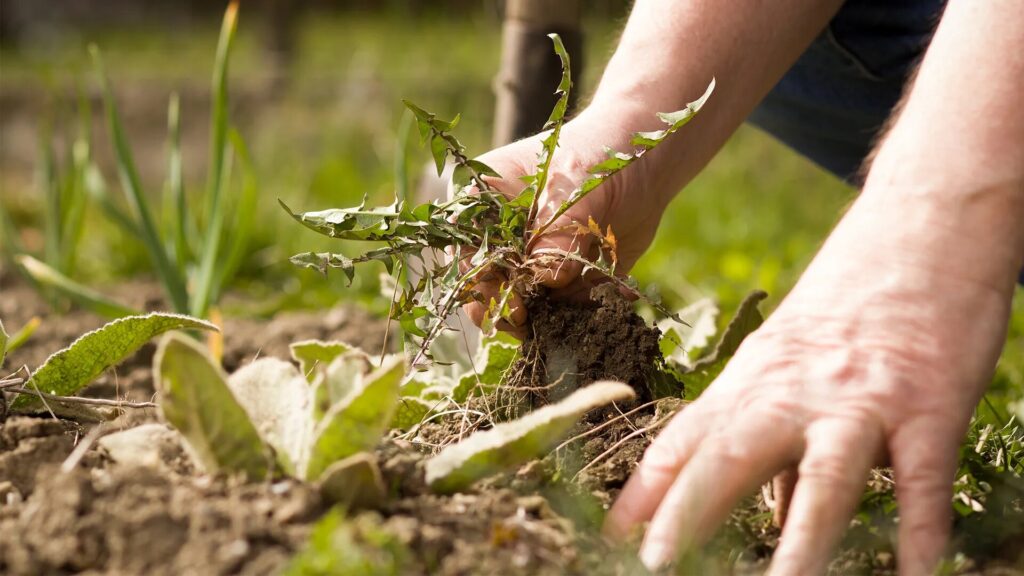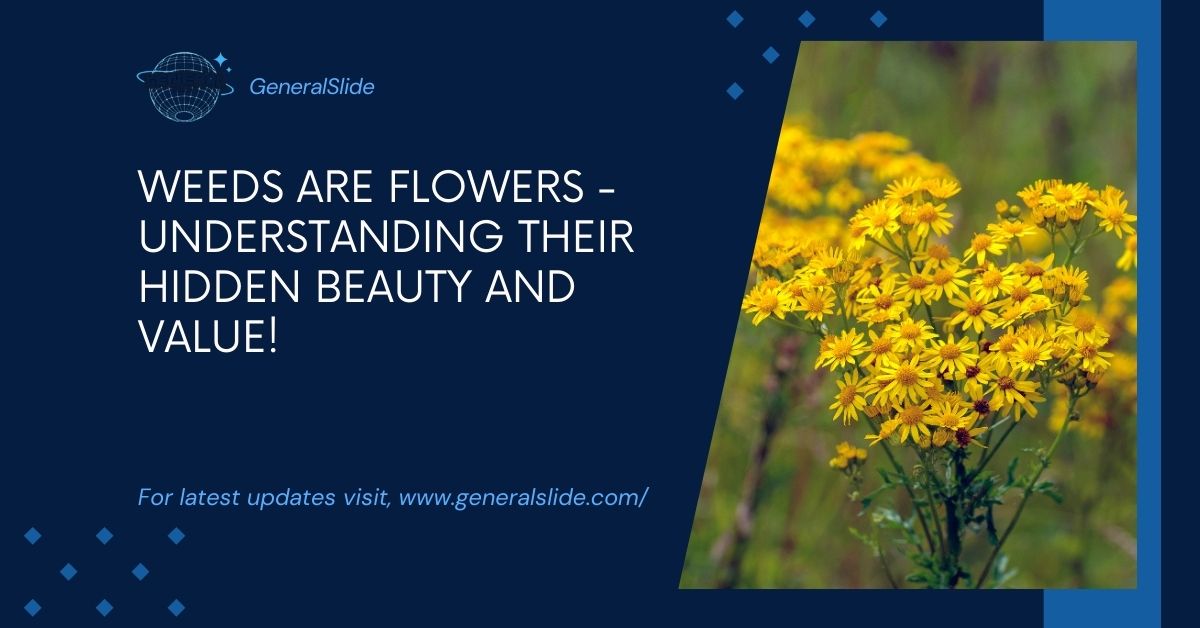Weeds Are Flowers – Understanding Their Hidden Beauty And Value!
Ever heard someone say, “weeds are flowers too, once you get to know them?” At first, it might sound poetic or like something from a children’s book—but there’s more truth in it than most people realize. The phrase “weeds are flowers” invites us to rethink how we view the wild plants popping up in our lawns, gardens, and roadsides. What if we’ve been looking at weeds all wrong?
Weeds are flowers too, just growing where they’re not expected. Many weeds are beautiful, useful, and essential for pollinators. Rethinking weeds helps us see nature’s hidden value and reminds us that beauty often grows in unexpected places.
This article will dive deep into why weeds are flowers, what makes a plant a “weed” in the first place, and how embracing this mindset can actually benefit our gardens, our health, and even the planet. Ready to see weeds in a whole new light? Let’s go.
The Definition of Weeds!
1. What are weeds in the traditional sense?
Traditionally, weeds are defined as plants growing where they’re not wanted. That’s it. The definition has nothing to do with whether the plant is harmful, ugly, or useless—it’s all about location. A rose in a cornfield could be considered a weed. That’s right—even a flower can be a weed!
2. Scientific vs. societal view of weeds:
From a scientific standpoint, weeds are just plants. They’re not evil invaders. Society, however, tends to label anything that disrupts our plans for a tidy lawn or perfect garden as bad. But if we dig a little deeper, we’ll realize how many of these “weeds” actually have value.
3. A.A. Milne’s well-known statement, “Once you get to know them, weeds are flowers too”:
A.A. Milne, the creator of Winnie the Pooh, gave us this quote. It captures the spirit of curiosity and kindness toward nature. Our attitude with weeds—and the world—can change significantly if we genuinely realize that they are flowers.
Weeds Are Flowers – The Beauty Behind the Label!
Many of the wildflowers we see and love today were once simply called weeds. Flowers like goldenrod, Queen Anne’s lace, and chicory often grow on their own without any help from people. They don’t need to be planted or cared for, yet they bloom beautifully and bring bright colors to fields and roadsides. These strong and independent plants show us that what we call a weed might just be a flower in disguise. They survive in tough conditions and still manage to look lovely, reminding us that beauty doesn’t always need a garden or careful attention.

It might be surprising, but many weeds are actually helpful to the environment. Take dandelions and clovers, for example. Dandelions help loosen the soil with their deep roots, attract bees and other pollinators, and can even be eaten in salads or made into tea and wine. Clovers are also useful because they help improve the soil by adding nitrogen. Plantains, which are not the banana kind, have been used in natural medicine for a long time. Clover is also great for lawns because it stays green, needs less water, and doesn’t grow too tall. Instead of thinking of these plants as problems, it’s better to see them as nature’s helpers. Weeds are more than just wild plants—they are useful, beautiful, and important.
Medicinal and Culinary Uses of Weeds!
- Chickweed is a wild plant that’s safe to eat and full of nutrients.
- Purslane is another edible weed packed with vitamins and omega-3 fatty acids.
- Nettles are rich in iron, calcium, and other minerals—just cook them first to remove the sting.
- These wild plants often have more nutrients than the vegetables we grow in gardens.
- Some weeds are used in herbal medicine and have been used for centuries.
- Burdock root is a common weed used in traditional healing to help cleanse the body.
- Yarrow is a wild plant that has been used to treat wounds and reduce inflammation.
- Weeds aren’t just unwanted plants—they can be powerful natural foods and remedies.
- Many so-called weeds are both healthy to eat and useful for healing.
- When people say “weeds are just flowers,” they might also mean they’re natural medicine too.
Ecological Importance of Weeds!
1. Soil health and erosion control:
Some weeds have deep roots that help prevent soil erosion. They break up compacted soil and help water seep deeper. That’s not damage—that’s repair!
2. Food sources for pollinators:
Bees, butterflies, and other pollinators thrive on the flowers of many weeds. Without them, pollination—and food supply—would take a serious hit. Another reason why weeds are flowers with a purpose.
3. Weeds in regenerative farming:
Working with nature rather than against it is the main goal of regenerative farming. Weeds often act as cover crops, pest deterrents, and natural fertilizers.
Psychological Shift – Changing Our Mindset!
Seeing weeds as flowers can have a surprisingly positive effect on mental health. There’s something deeply freeing about embracing the wild and letting go of the constant need for perfection. When we shift our perspective and view weeds not as unwanted invaders but as natural, beautiful parts of the landscape, we open ourselves up to appreciating the beauty in imperfection. This small shift in perspective inspires us to take our time and view the world more clearly.. Weeds, often overlooked or pulled out without a second thought, become gentle reminders to be patient and present.
Read: Komik Hisashiburi Ni Jikka Ni Kaettara Otouto Ga Ts Shiteta – A Journey Of Transformation!
Common Weeds That Are Actually Flowers!
| Weed Name | Flower Type | Benefits | Attracts Pollinators |
| Dandelion | Bright Yellow Flower | Edible, medicinal, soil health boost | Yes |
| Clover | Small White/Pink Flowers | Nitrogen fixer, bee-friendly | Yes |
| Chicory | Blue Daisy-like Flower | Digestive aid, edible leaves | Yes |
| Queen Anne’s Lace | White Umbel Flower | Natural insect repellent | Yes |
| Purslane | Tiny Yellow Flower | Edible, rich in omega-3 | No |
| Wild Violets | Purple/Pink Flower | Pretty ground cover, edible flowers | Yes |
| Yarrow | White/Yellow Clustered Flowers | Medicinal uses, soil healer | Yes |
This table shows how weeds are flowers in disguise, offering beauty and benefits where many only see nuisance.
“Weeds Are Flowers” in Literature and Art!
1. Symbolism in poetry and painting:
In poetry, weeds appear as symbols of tenacity and defiance. Artists often paint them to reflect wild beauty.
2. Nature’s rebels as inspiration:
Think of weeds as underdog heroes. They’re tough, beautiful, and they grow where they’re needed most.
Practical Benefits of Accepting Weeds!
- Use less fertilizer when you have a weed-tolerant lawn.
- Fewer pesticides are needed with a lawn that allows some weeds.
- You can save money on lawn care with less chemical use.
- Using fewer chemicals is better for the environment.
- Weed-friendly lawns need less water to stay green.
- Clover can stay green even without using sprinklers.
- Some weeds can grow well without a lot of care.
- Less watering means lower water bills.
- A lawn that accepts some weeds is easier to maintain.
- You spend less time and money keeping the lawn healthy.
How to Coexist With Weeds?
When planning your garden, try working with nature instead of fighting it. One simple way to do this is by planting around the local weeds in your area. These weeds are already used to the climate and soil, so they grow easily without much help. Instead of pulling them all out, think about how you can use them to your garden’s advantage. Some of these wild plants can actually protect your other plants, keep the soil healthy, and even attract helpful insects like bees and butterflies. By leaving some space for these local plants, your garden can become stronger, more balanced, and easier to care for in the long run.

You can also let a few weeds stay on purpose by choosing the ones you like best. Take a close look at what’s already growing naturally and pick the ones that look nice or serve a useful purpose. Some weeds have pretty flowers, while others help stop soil erosion or add nutrients to the ground. Letting your favorite ones grow in the right spots can make your garden look more natural and full of life. You might be surprised at how these simple, often overlooked plants can add both beauty and strength to your garden.
The Future of Gardening with Weeds!
1. Permaculture and “weed wisdom”:
Permaculture encourages us to observe and learn from weeds instead of fighting them.
2. Why “weeds are flowers” is the next green trend:
Sustainable, low-maintenance, eco-friendly—that’s where gardening is going. And weeds are leading the way.
Read: Diamondfairybunny – A Magical Journey Into Enchantment!
FAQs:
1. Are all weeds harmful?
Not at all. Many weeds offer ecological, nutritional, and medicinal benefits.
2. What are some common weeds that are actually flowers?
Dandelions, Queen Anne’s lace, chicory, clovers, and even goldenrod are all beautiful flowering plants.
3. Can weeds be good for my garden?
Absolutely! Many improve soil, attract pollinators, and help with natural pest control.
4. What does the statement “weeds are flowers” mean?
It means that many plants we label as weeds are actually useful, beautiful, and beneficial if we look past their reputation.
5. How can I garden more sustainably using weeds?
Try incorporating local wild plants, reducing chemical use, and letting nature lead your garden design.
Conclusion:
So next time you see a weed, look closer. Is it really a pest—or is it a flower waiting for a second chance? The idea that weeds are flowers isn’t just a cute phrase—it’s a radical shift in how we see the world. Embracing this view can bring beauty, health, and harmony back into our lives and landscapes. Let’s stop the war on weeds and start welcoming them as old friends.
Also Read:
- Ssis-950 – The Ultimate Solution For Data Integration!
- Berry0314 Shower – Luxury Meets Innovation!
- Thesportshouse .Net Pendridge – Your Ultimate Sports Experience!
- Unsuccessful Draft Pick – Understanding The Consequences And Causes In Professional Sports!
- Spartan Capital Securities Llc Broker Jordan Meadow – A Comprehensive Guide!



































































Post Comment